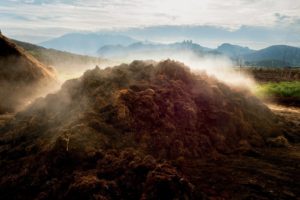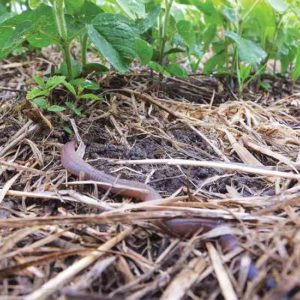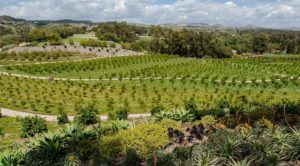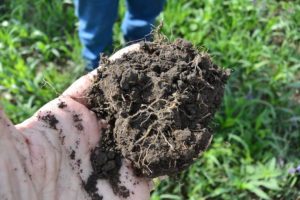Can Carbon Farming Save the Earth?
“The world is warming not only because fossil fuels are being burned, but also because soils, forests and wetlands are being ravaged. In recent years, some scientists have begun to ask whether we can put some of that carbon back into the soil and into living ecosystems, like grasslands and forests. This notion, known as carbon farming, has gained traction as it becomes clear that simply reducing emissions will not sufficiently limit global warming.”
“Carbon farming’s fundamental conceit is that if we change how we treat this land, we could turn huge areas of the earth’s surface into a carbon sponge. Instead of relying solely on technology to remove greenhouse gases from the air, we could harness an ancient and natural process, photosynthesis, to pump carbon into what’s called the pedosphere, the thin skin of living soil at the earth’s surface. If adopted widely enough, such practices could, in theory, begin to remove billions of tons of carbon dioxide from the atmosphere, nudging us toward a less perilous climate trajectory than our current one.”
“In a 2016 paper, Pete Smith, a soil scientist at the University of Aberdeen in Scotland, and the influential climate scientist James Hansen argued that land-management practices are one of the few affordable options available today for drawing down carbon. “What’s surprising to me is that we’ve not done it sooner,” says Smith, who is also a lead author on a recent U.N. report that explores carbon-dioxide-removal technologies. “This has the potential to make a huge difference.”
Super Food Plants With Super Benefits with David Sargert
Broaden your plant scope with super food plants!
David Sargert from It’s About Thyme explains how to grow moringa, curry tree, neem, gotu kola, henna and more.
Pushing Farming Beyond Organic
A closer look at revolutionary ideas that will shape the future of farming.
“What Dorn discovered at Rodale was a way to do organic no-till agriculture. The practice was developed by Jeff Moyer, the institute’s longtime farm director, who came up with an innovative way to combine the two farming systems. It began as many good ideas do—by accident…”
“As developed by Moyer and colleagues, there are four basic steps to organic no-till:
1. Protect the soil and keep down the weeds in a farm field by planting a winter-hardy cover crop in the fall, such as vetch, barley, wheat, rye, or oats.
2. When the cover crop reaches maturity in the spring, the farmer knocks it down with a roller-crimper.
3. The farmer plants a cash crop into the crimped cover crop with a no-till drill, usually at the same time as crimping (crimper in front of the tractor, drill pulled behind), and then the cash crop grows up through the crimped cover crop.
4. After harvest in the fall, the organic residue of both crops can be disked into the soil, if the farmer wants, as next year’s cover crop is planted. All together, the use of a cover crop and a roller-crimper creates a dense mat of organic material on the soil surface that smothers weeds while providing nutrients, shade, and moisture to the cash crop.
Dorn jumped at the idea. He thought it literally rolled the best ideas in agriculture together: organic production, no-till, and a positive energy balance (this method requires only two passes with a tractor in contrast to the ten or twelve needed in a conventional system). “
UTNE
Regenerative Organic Certification Unveiled
Patagonia Provisions along with Dr. Bonner’s, Rodale Institute and a number of leaders in the organic industry, spent the past year working on a regenerative organic certification program.
“Regenerative organic agriculture can rebuild topsoil, reduce pollution from chemicals and sequester the carbon that causes climate change—all at the same time. In 2014, researchers at the Rodale Institute estimated that if current farmland shifted to regenerative organic practices, 100% of annual global CO2 emissions could be sequestered in the soil.”
“We are focused on bringing together the best science on regenerative practices with the best practices for social fairness and animal compassion. Our goal is to support and strengthen the USDA organic label, not undermine it in any way. We absolutely respect and support USDA organic and fundamentally don’t believe you can do regenerative without organic.”
Regenerative Organic Certification Wants To Be The Ethical Standard To Rule Them All
“Fair Trade Certified. Certified Organic. Non-GMO. Certified Humane–we’re used to seeing these labels scattered over products touting their ethical and environmental backgrounds.
But the brands and farmers meeting these standards often feel “like scouts with a sash full of merit badges,” says Jeff Moyer, president of the Rodale Institute, which advocates for organic farming practices. Rodale is one of a handful of organizations working with the natural soap brand Dr. Bronner’s and Patagonia to roll out a new sustainability standard, which Dr. Bronner’s president Mike Bronner calls “one standard to rule them all,” because it will incorporate best practices from pre-existing standards–as well as new criteria–into one certification.”
A Method for Growing a Lot of Food on Little Land
Fate of city-based civilization in the hands of farmers
“When we look at global desertification playing a major role in climate change, there is simply no tool in the reductionist management framework that can sustain the cycle of life in grass plants over about two thirds of the world’s land.
These are the vast regions where the rainfall is seasonal and humidity erratic, were soils, soil life, plants and animals co-evolved including billions of large grazing animals and pack-hunting predators. We have no option but to include livestock as a tool with a change to Holistic Management to seriously address the major biological aspects of desertification and climate change. ”
Is Meat Good or Bad for You?
“Simply put: In the absence of sugar and refined carbs and adequate amounts of omega-3 fats in your diet, saturated fat is really not a problem. Again, quality matters: The saturated fat in a fast food cheeseburger is completely different than what you get in coconut butter or a grass-fed steak.”
-Dr. Mark Harmon
Natural Solutions to Climate Change – Project Syndicate
“Some of the most promising ways to mitigate climate change are what we call “natural climate solutions”: the conservation, restoration, and improved management of land, in order to increase carbon storage or avoid greenhouse-gas emissions in landscapes worldwide. The full potential of these solutions is detailed in a new study produced by the Nature Conservancy, and 15 other leading institutions.”









